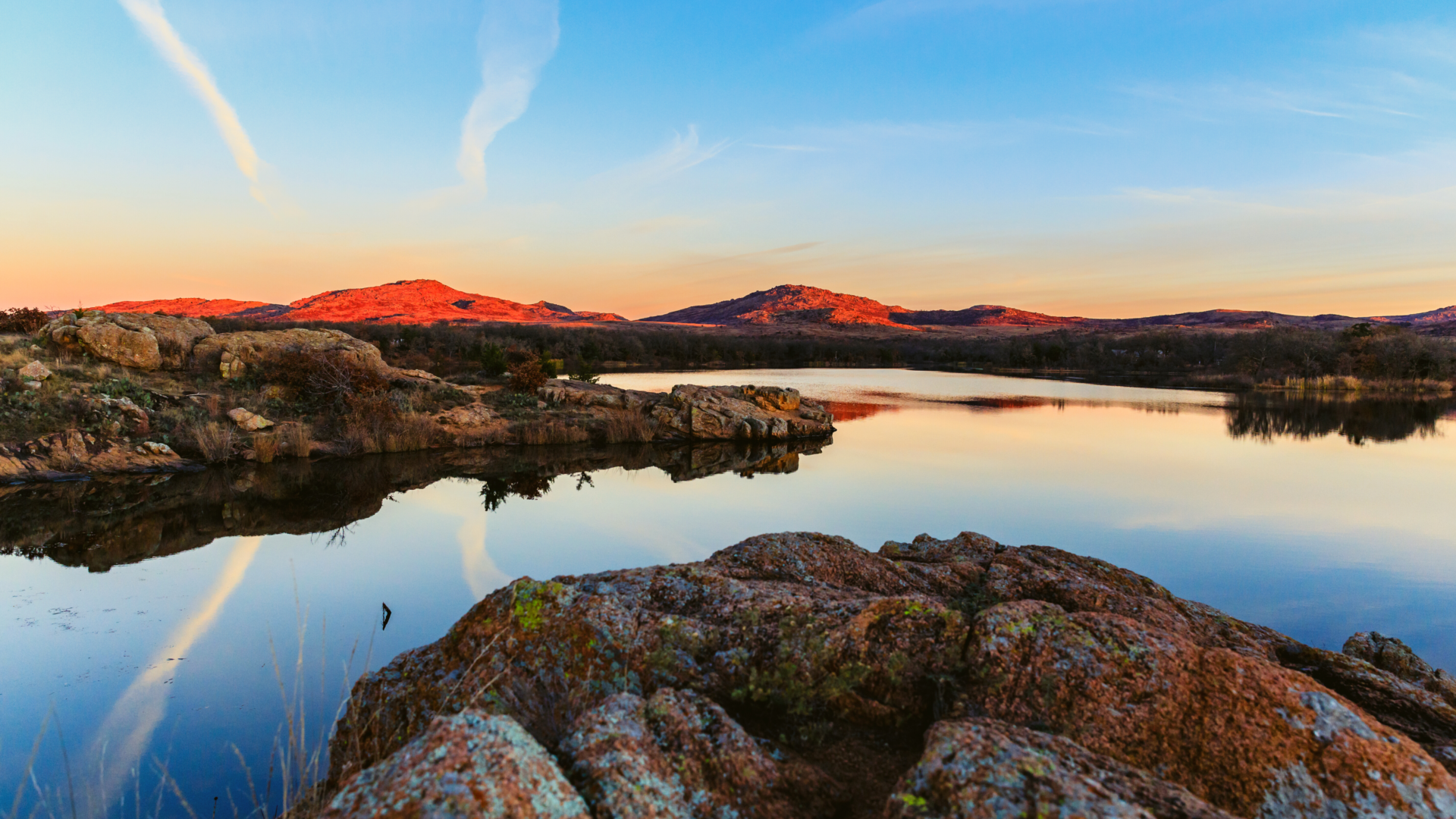Commemorating Indigenous Peoples Day with Dr. Kyle Whyte
Written by Alex Casey, Communications Fellow | Published: October 12, 2021
Indigenous populations have consistently acted as some of the most important and effective stewards of American lands. But long histories of exclusion, marginalization, colonization, relocation, and capitalist expansion have left Indigenous people some of the most climate vulnerable populations today.
According to Dr. Kyle Whyte, a professor at University of Michigan and Member of the Citizen Potawatomi Tribe, Indigenous societies historically moved and shifted around constant changes in weather and seasons. These changes made communities more likely to take on kinship responsibilities, which built trust, consent, and respect. This investment in a broader collective produces what Whyte calls a “humble sense of ecology,” which recognizes that humans and their environments are interrelated and interdependent.
Western attitudes toward ecology have been anything but humble since the Industrial Revolution. The industries that increase greenhouse gases in the United States are often the same ones that profit from Indigenous dispossession. The General Mining Act of 1872, the Mineral Leasing Act of 1920, and the Omnibus Tribal Leasing Act of 1938 all benefited those set up to profit from fossil fuels while facilitating degradation and dispossession of Indigenous lands. New research says that these policies have made Indigenous populations more susceptible to live on lands that limit movement and have fewer valuable resources like oil, gas, and fresh water. According to Whyte, they also undermine Indigenous abilities to adapt to changing climates.
In coastal states, Indigenous populations face encroaching seas that threaten shellfish resources and inundate freshwater habitats. In the Great Plains and Midwest, Indigenous agriculture is threatened by drought and increasing aridity. These conditions interfere with the ability to feed livestock, and lower groundwater levels lead to higher rates of fish die-offs. The 229 federally recognized tribes in Alaska — which rely on subsistence hunting of salmon and caribou — face changes to hunting and food storage patterns when sea ice melts and permafrost thaws. All of these environments are threatened by global warming and the broader destabilization of the climate system.
Histories of dispossession and degradation also make Indigenous populations more susceptible to reproductive injustice, which is why Indigenous climate advocacy is often linked with reproductive rights and gender equality advocacy. The Women of All Red Nations famously linked these interconnected issues when it exposed uranium poisoning to Native women’s reproductive health problems and environmental contamination. The same organization also found that as many as 42% of Native women aged 15-49 had been unknowingly sterilized in a government eugenics program in the 1970s.
Today, Indigenous peoples have some of the worst health care outcomes in the U.S. Indigenous women are two times more likely than white women to die of pregnancy-related complications. They are two and a half times more likely to experience all sexual assault crimes compared to all other races. Indigenous women are also murdered at ten times the national average.
Whyte said when people and institutions fail to address oppressive systems that continue to marginalize Indigenous people, they miss out on the expertise of communities that could best mobilize actual socio-environmental change. Directing attention to single problems, rather than addressing and acting upon the oppressive histories that create interconnected problems, can actually further disempower Indigenous communities. For example, he said, climate ‘solutions’ like nuclear power, hydropower, and tree planting initiatives are not necessarily the best option for Indigenous communities trying to restore biodiversity and attain basic infrastructure that other parts of the country have had for decades.
“We can’t entertain the just energy market until harms are reversed and our realities acknowledged,” Whyte said. “For people concerned about justice … ‘climate justice’ and ‘equity’ are [often] inadequate for many of the harms that Indigenous communities face.”
What does kinship look like?
Indigenous People’s Day is a time to reflect on the institutions that systematically harmed and disadvantaged the first stewards of the land that eventually became the United States. It’s also a time to reflect on enduring barriers for Indigenous climate and reproductive justice, and what justice looks like on national and local scales. According to Dina Gilio-Whitaker, a scholar, author, and Colville Confederated Tribe member, justice must be responsive to the needs of Indigenous peoples, or “Indigenized.”
On an international scale, kinship may look like policies that realize the rights of landscapes and recognize that human health relies on ecosystem health. On a national scale, kinship looks like the Justice40 initiative, which allocates 40% of all U.S. climate funds to disadvantaged minority communities. At a more local scale, kinship can look like communities coming together to transition extractive economies to regenerative ones. It can look like restoring particular plants, animals, and native species, and educating community members in the process. Kinship varies in all of its forms, but inherent to its foundation is the respect that humans, animals, and other forms of life operate in a shared system where every part is deserving of consent and reciprocity.
Current climate movements have a lot to learn from Indigenous kinship networks that chip away at harmful systems and create more sustainable and benevolent societies. In the long run, we have no choice but to listen and follow the lead of this continent’s original climate action architects. As climate change and its attendant disasters rise in frequency and intensity, environmental justice for the 574+ Indigenous nations within the United States will mean environmental justice for everyone, and the earth, too.

